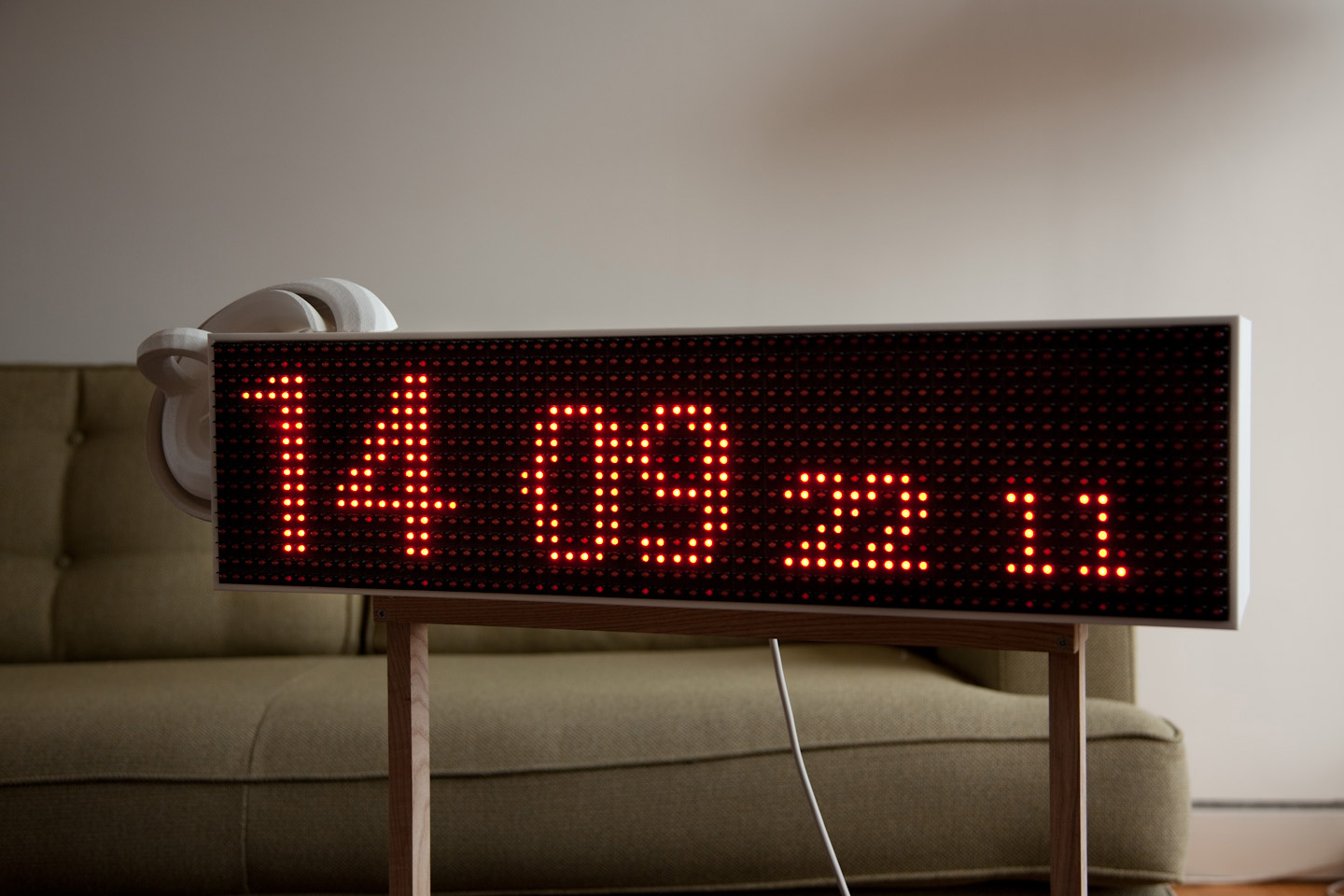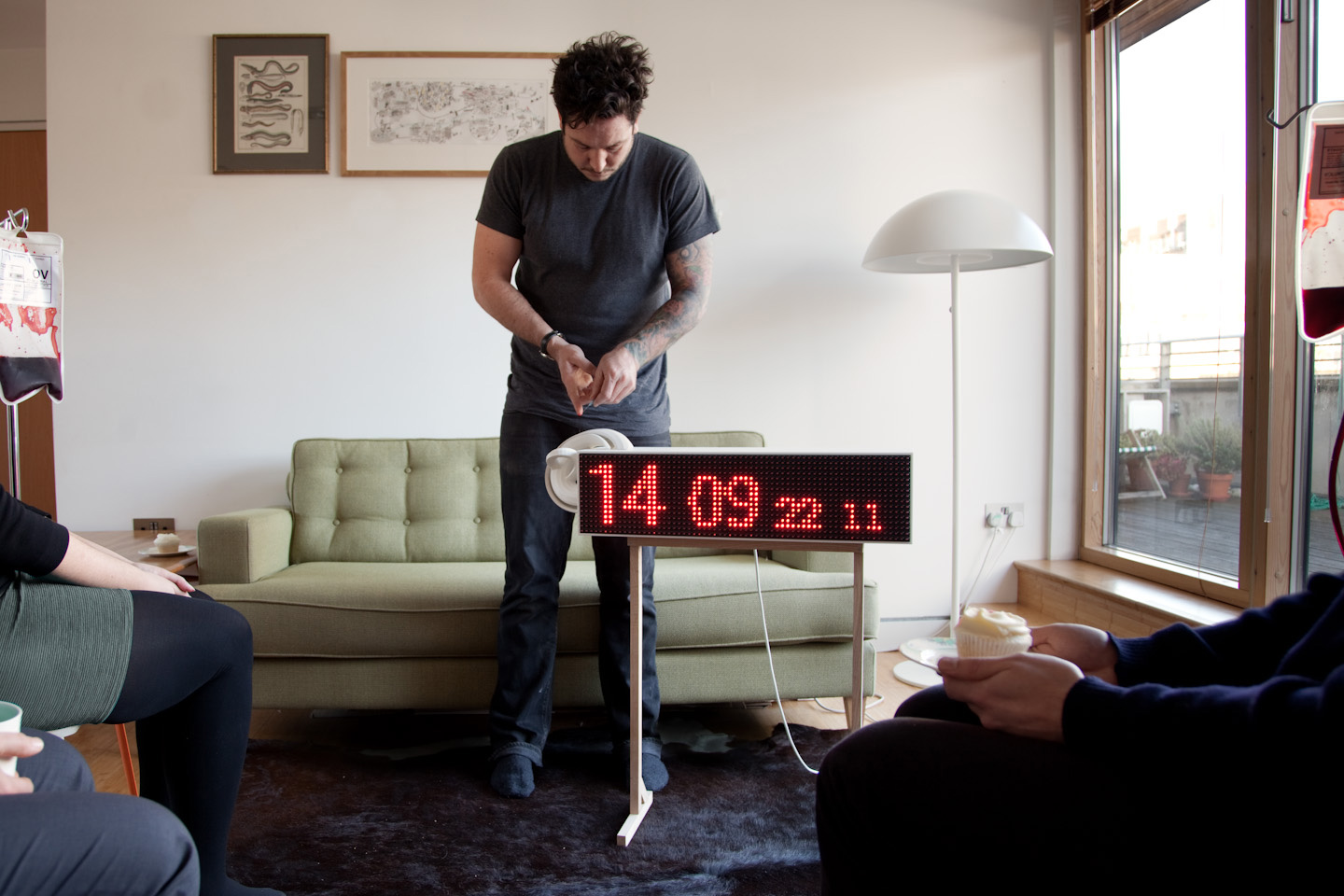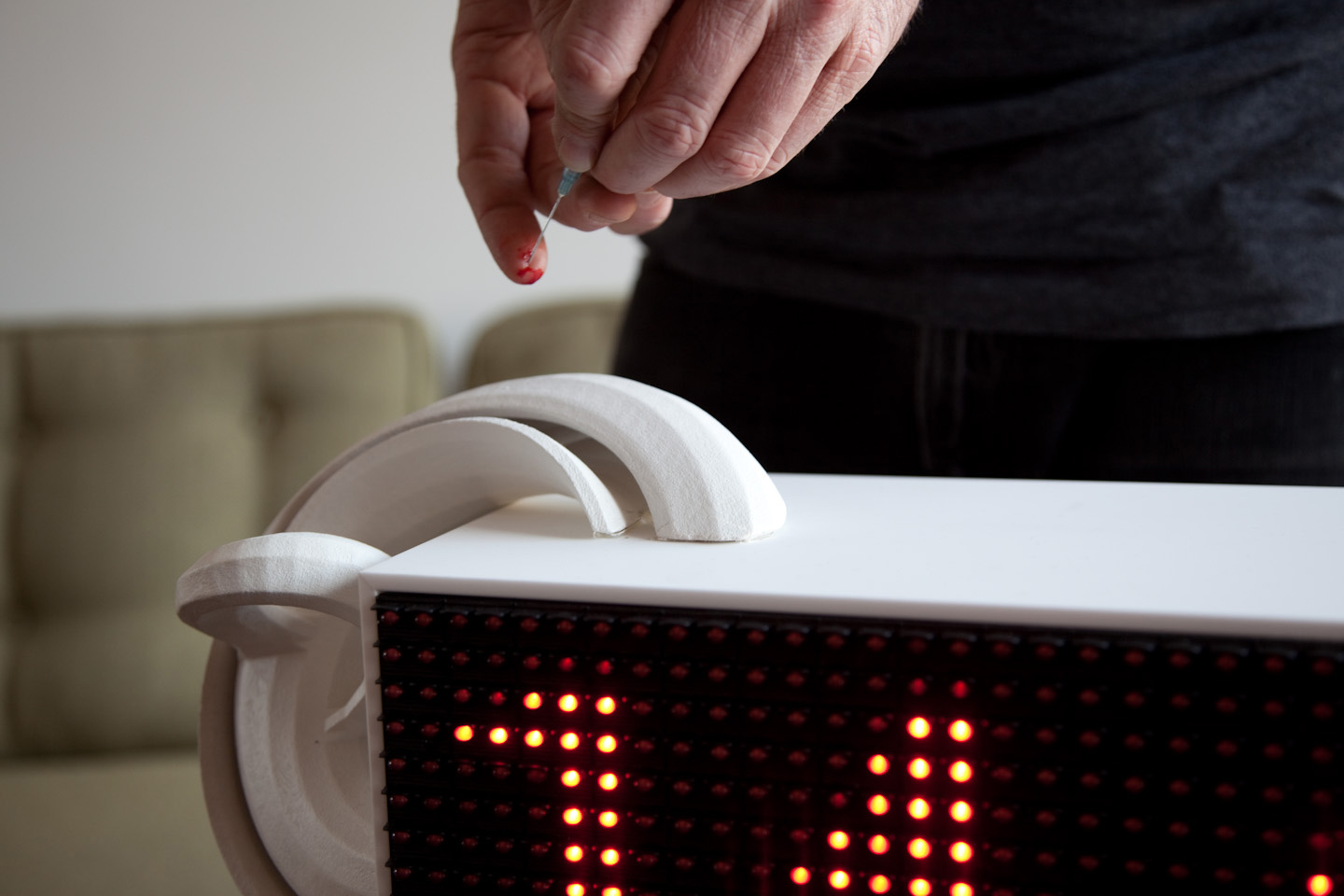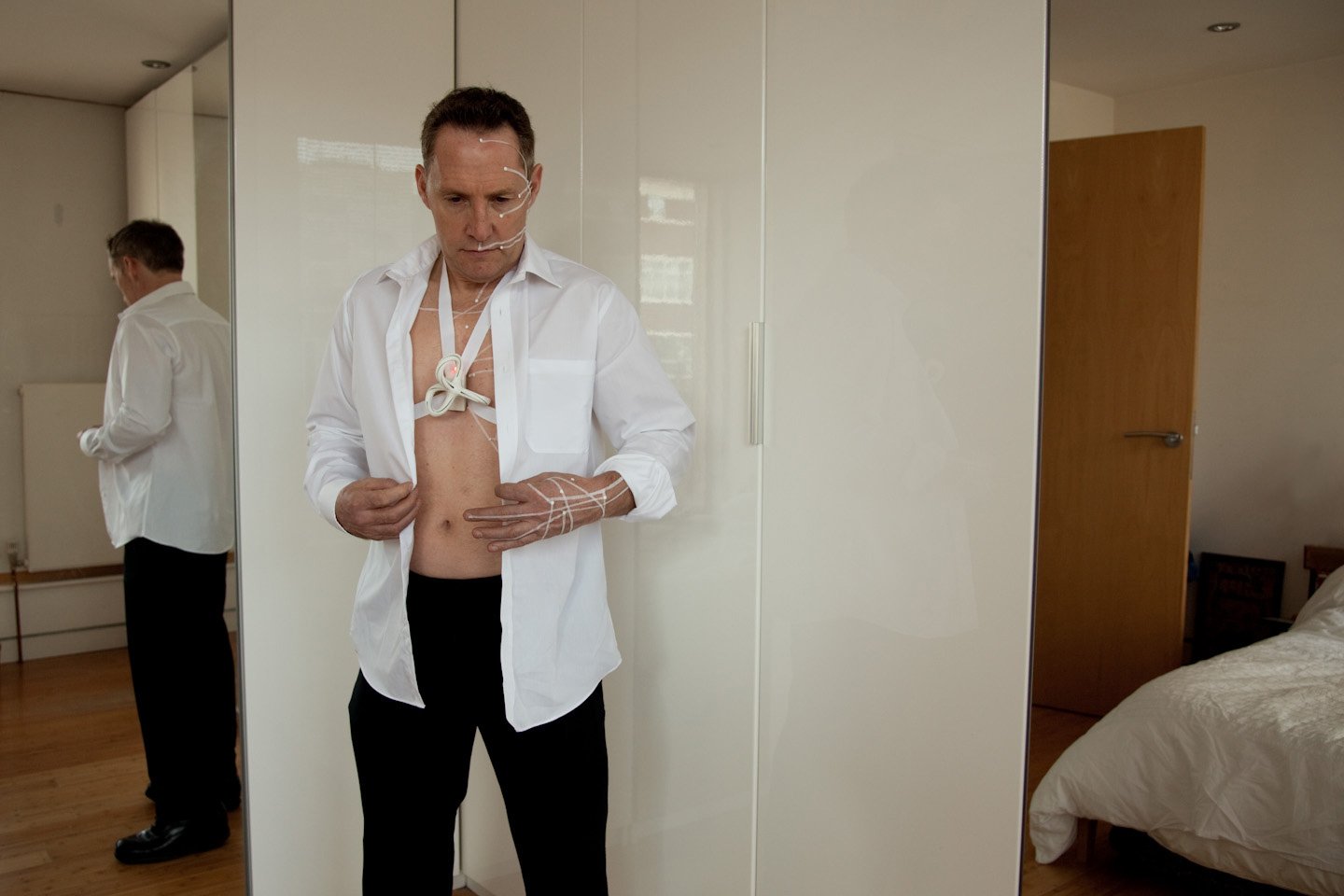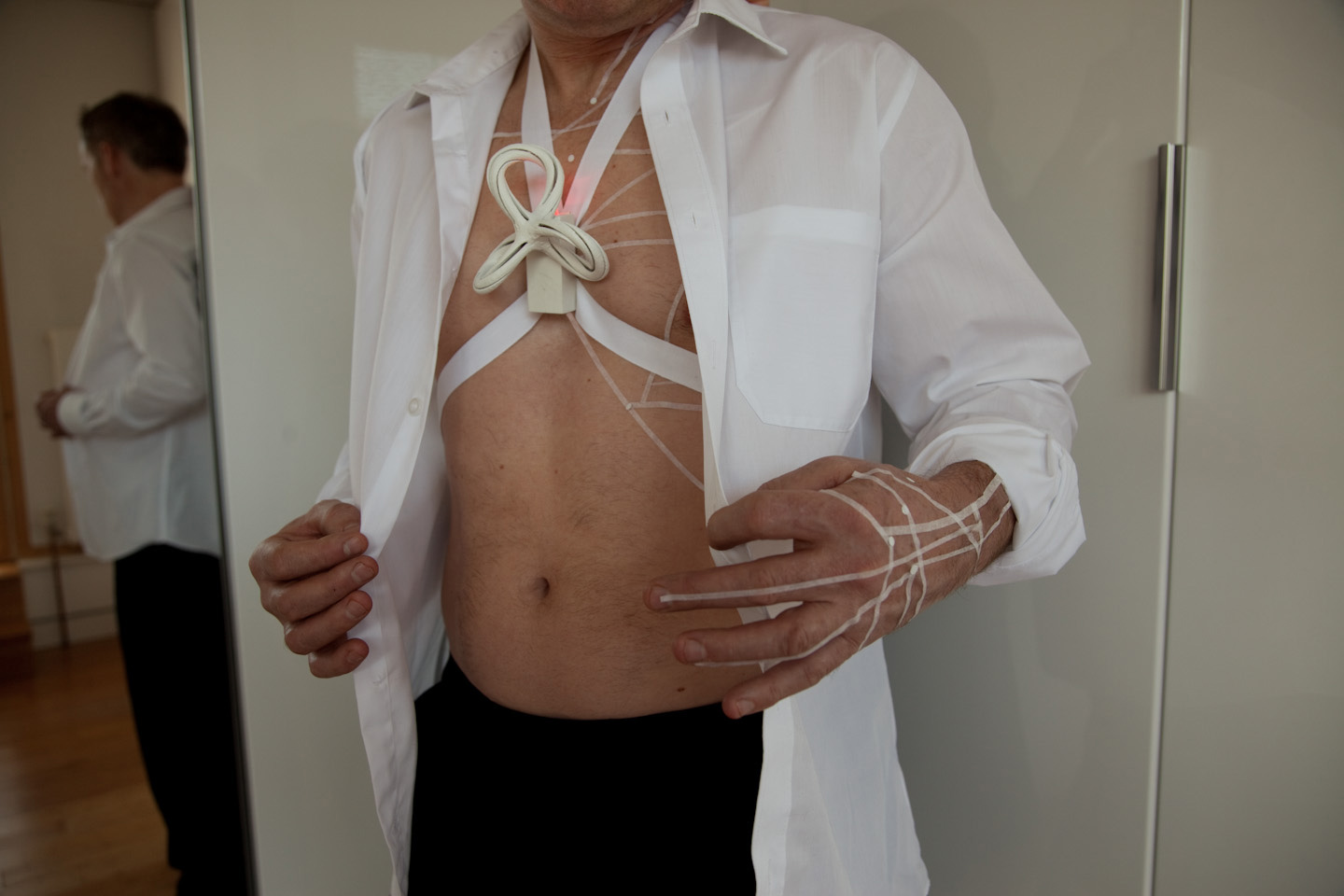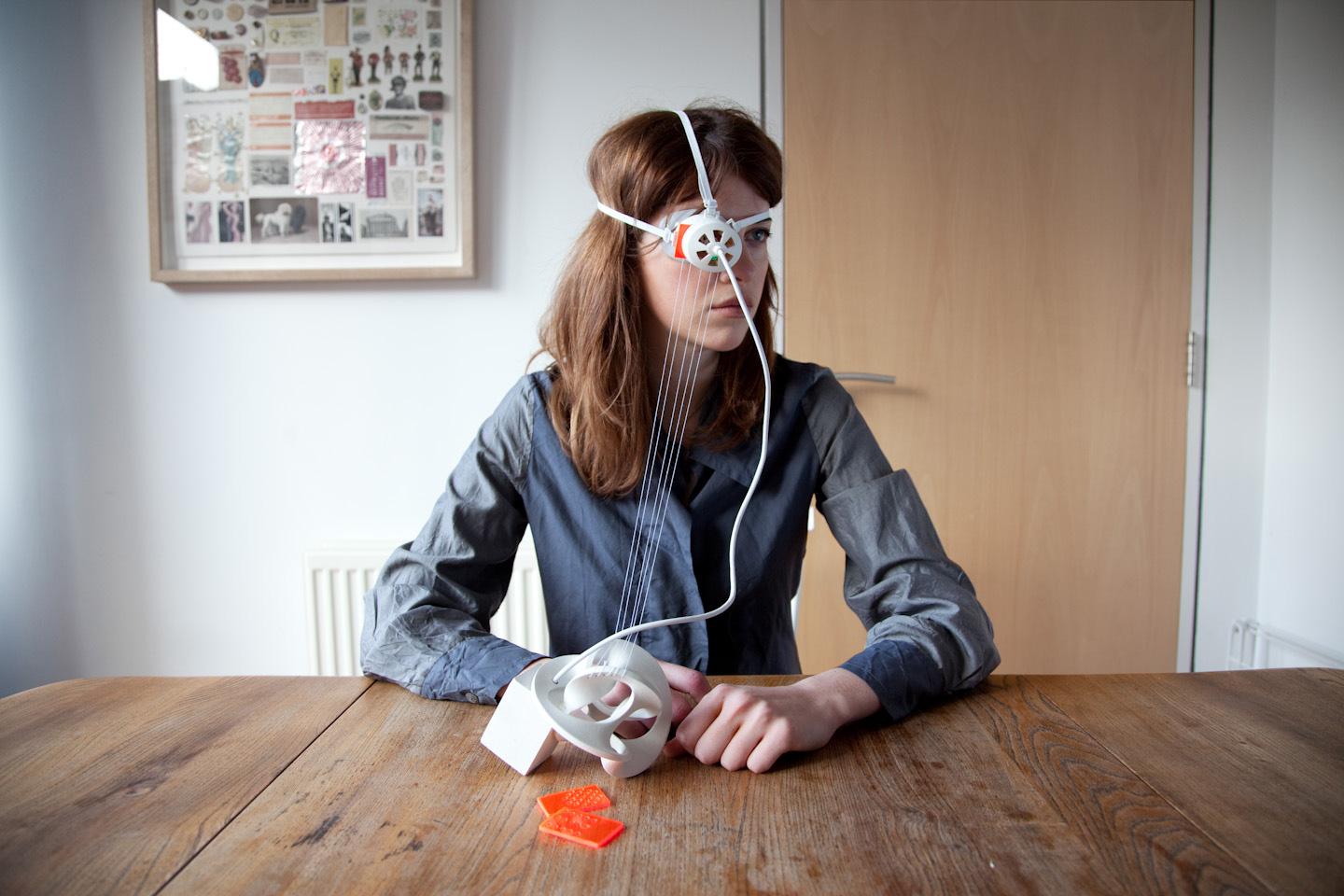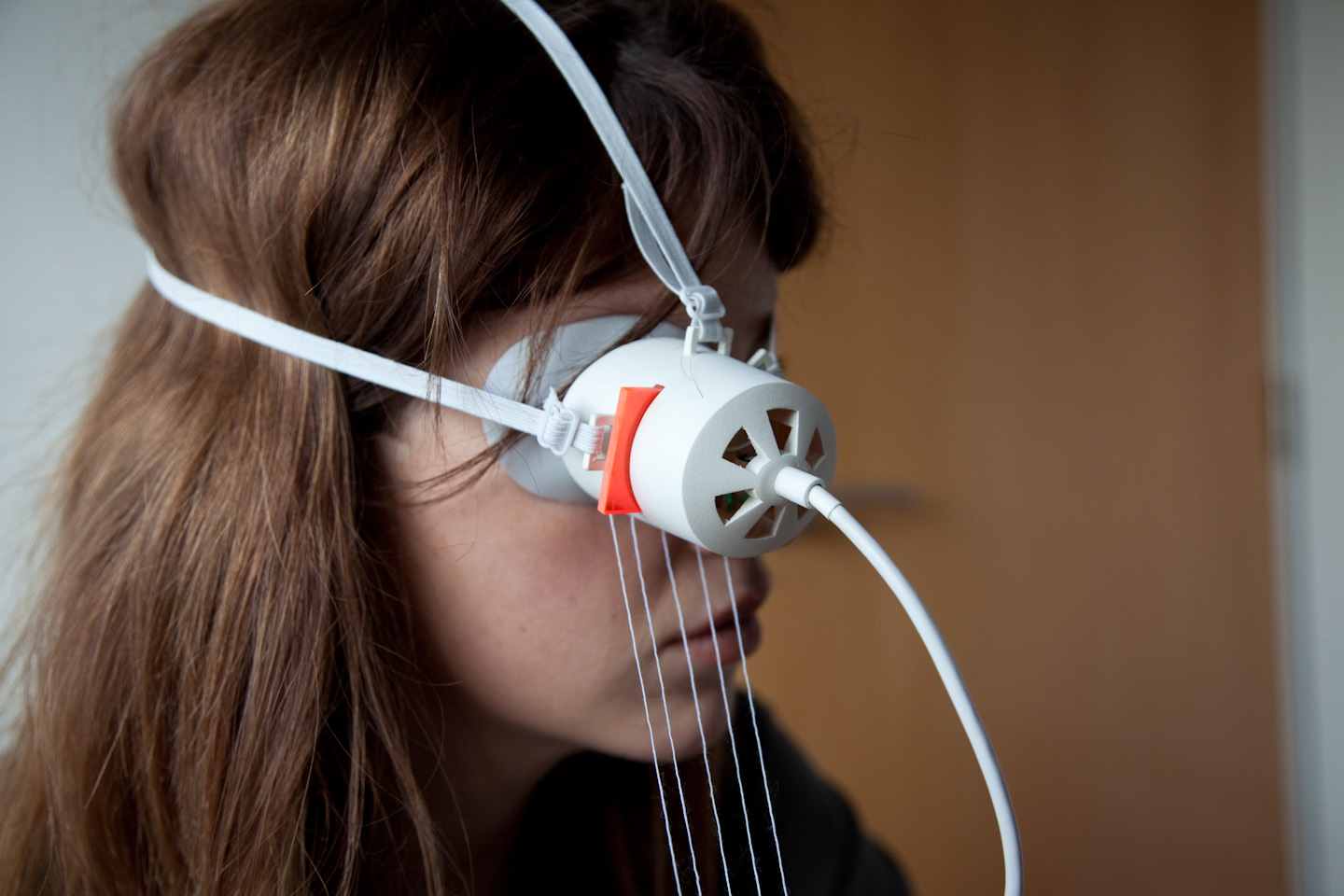Three speculative scenarios exploring the future of biosensors, and how numbers might be measured, performed and known.
BLOOD
A device for measuring biological age
Measuring telomeres length, toxins, fats and cholesterol in the blood could inspire us to attempt predicting our life expectancy. This object assists a support group to come together for a blood test – a public measurement of each member’s biological age. In turn, members give a drop of blood to the machine, which instantly displays their body age to the group.Through this performance they compare their speculated remaining lifetimes, establishing new perceptions of the norm and supporting each other in measures devised to step further from death. Fluctuations in the blood’s values are being achieved through lifestyle choices, nutritional efforts and transfusions of young blood bought from plasma farms.
SWEAT
A device for becoming a corporate biosensor
Algorithms might take control of running our businesses, trading in the market through interactions with other algorithms. While the machines may dominate trade, there are certain kinds of information they cannot obtain. The employees’ main role then becomes that of a biological sensor.
Employees are sent out to socialize with clients and competitor algorithm-representatives, collecting biological data through sweat and body fluids exchanged and extracted during a game of golf, harvesting subconscious signals for the machine. The paper tape network wicks these fluids to provide diagnostic information to be transmitted to the algorithm, measuring and recording several physiological indices such as pheromones, blood pressure, pulse, respiration, and skin conductivity.
TEARS
A device for emotional calibration
In the emerging cultures of self quantification, self knowledge is often obtained via empirical testings.This object supports a desire to become a measuring device, as one’s mental stability is self diagnosed and adjusted through a calibration process of orchestrated crying. In order to guarantee emotional consistency, tears are triggered artificially as a measuring strategy and a calibration performance. The object measures the emotional state through the tear fluid and feeds these measurements back to the eye as puffs of air and a flashing light to provide an index and scale for these feelings.
A design proposal for Intel Research and the Sociology department at Goldsmiths, University of London.


